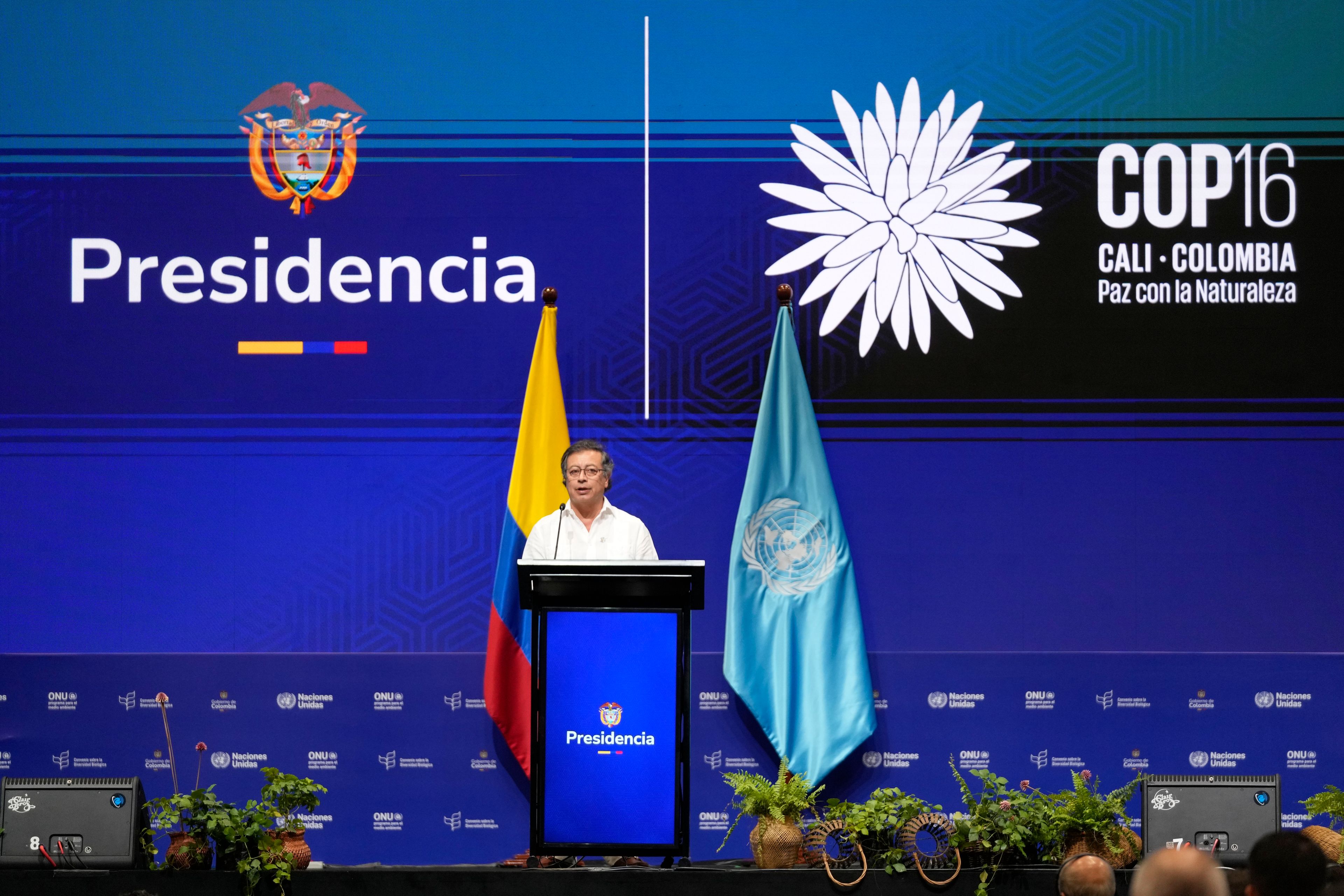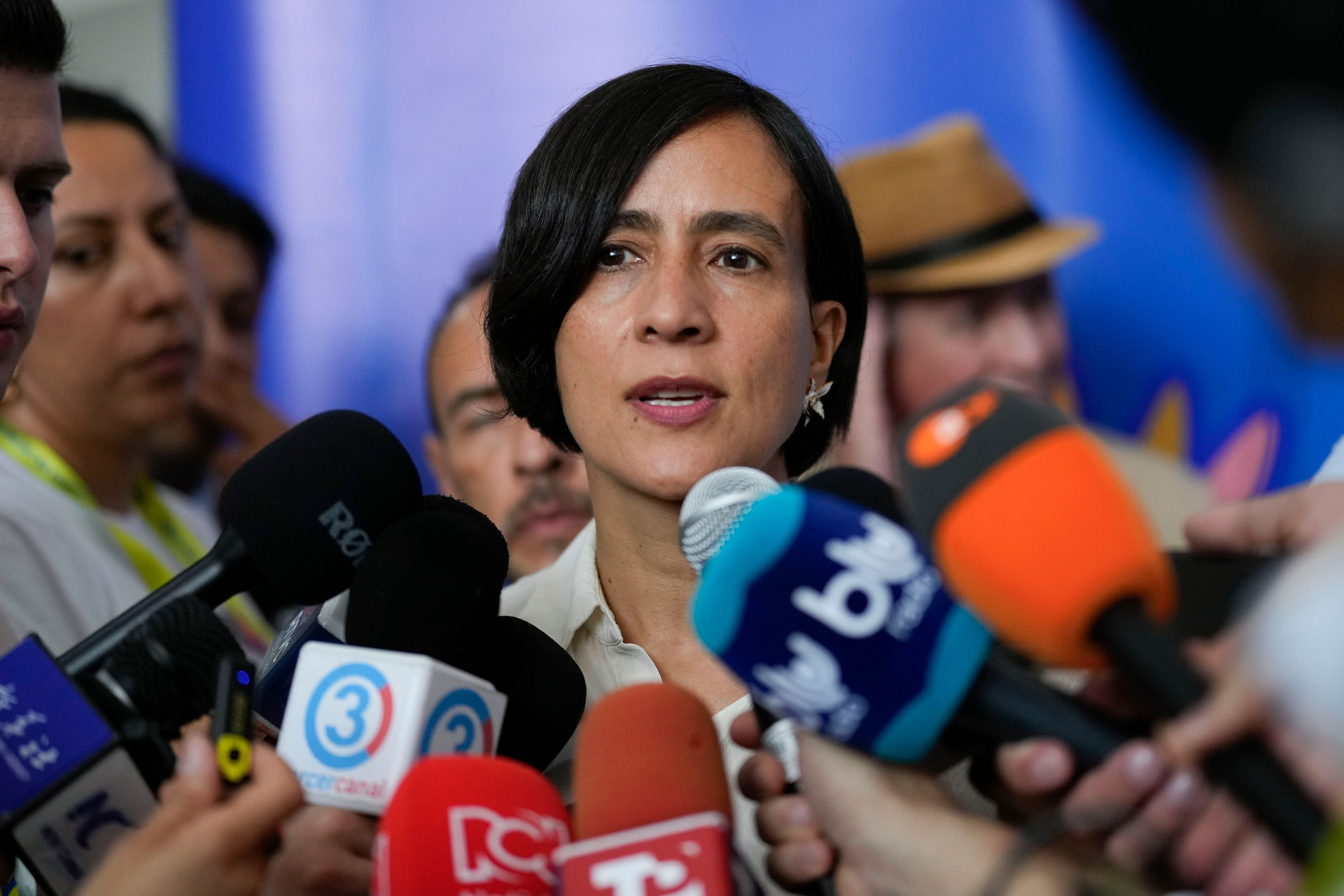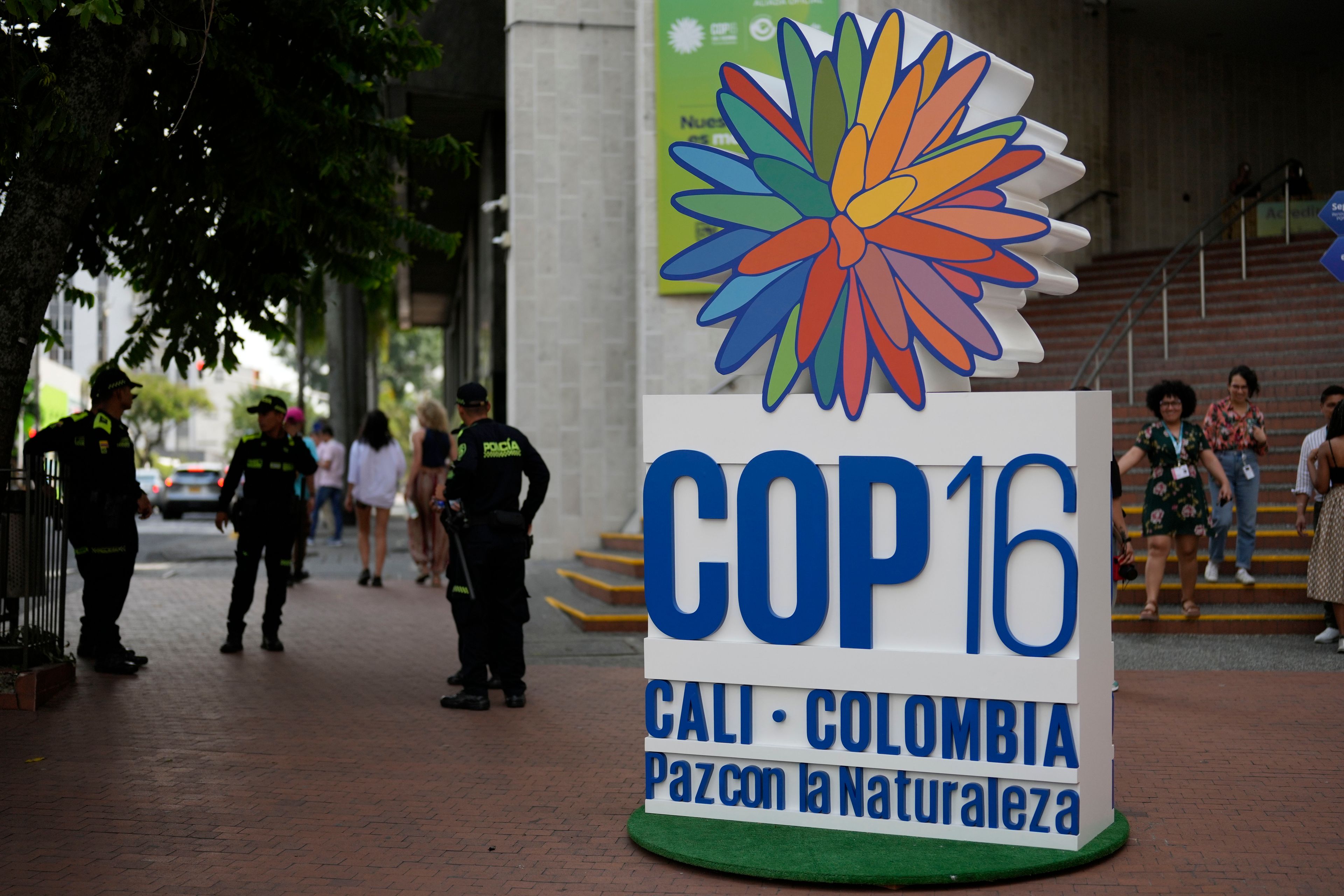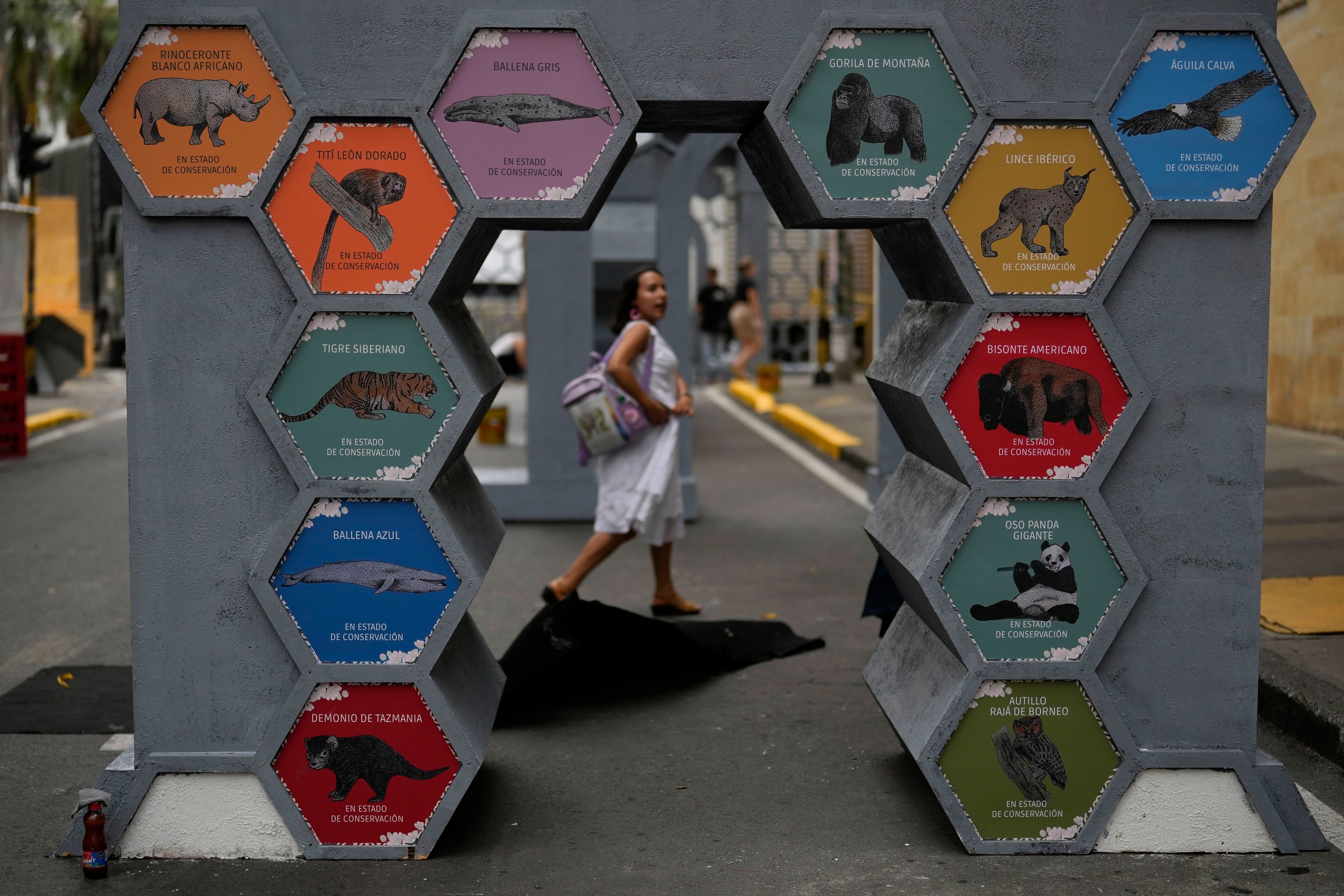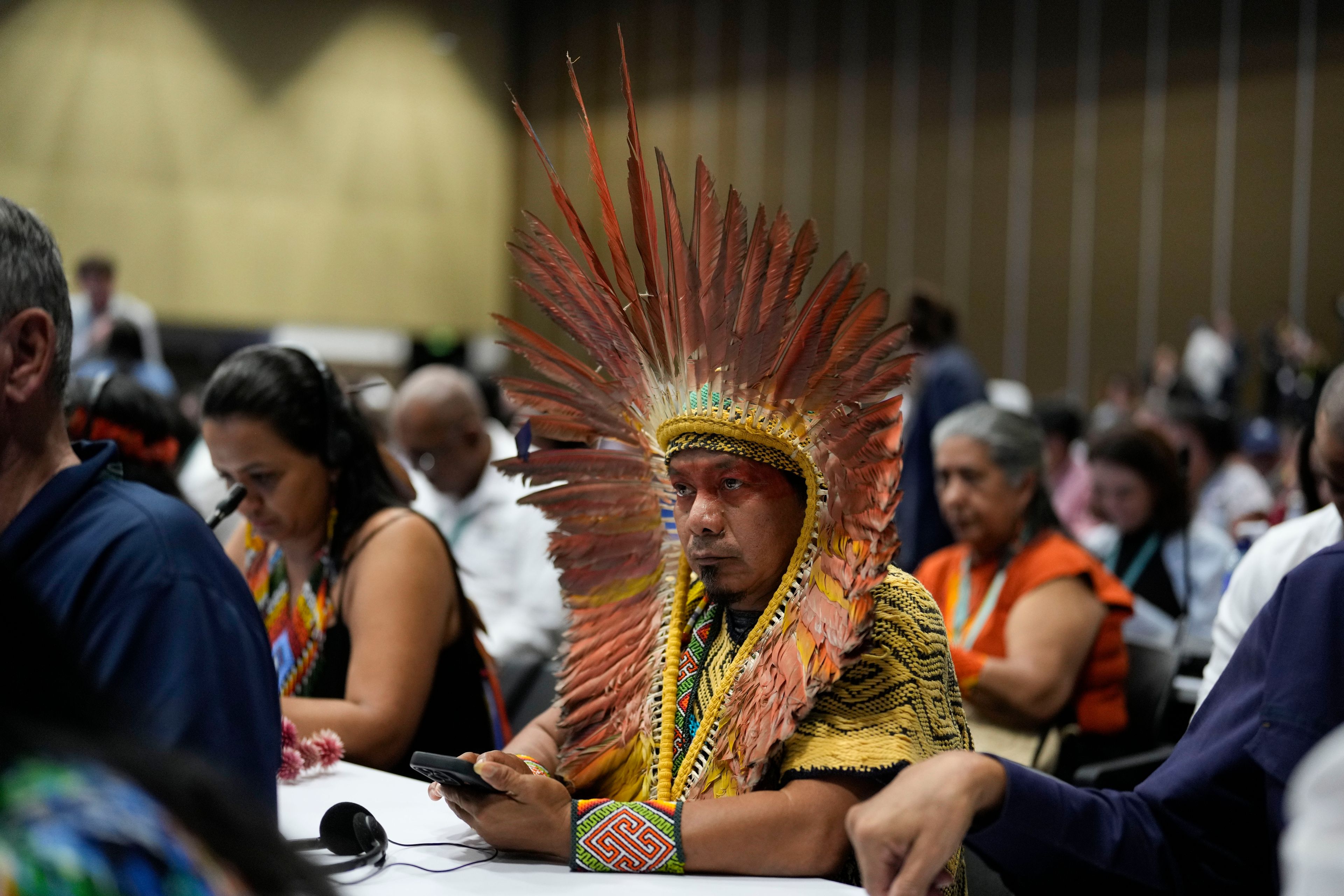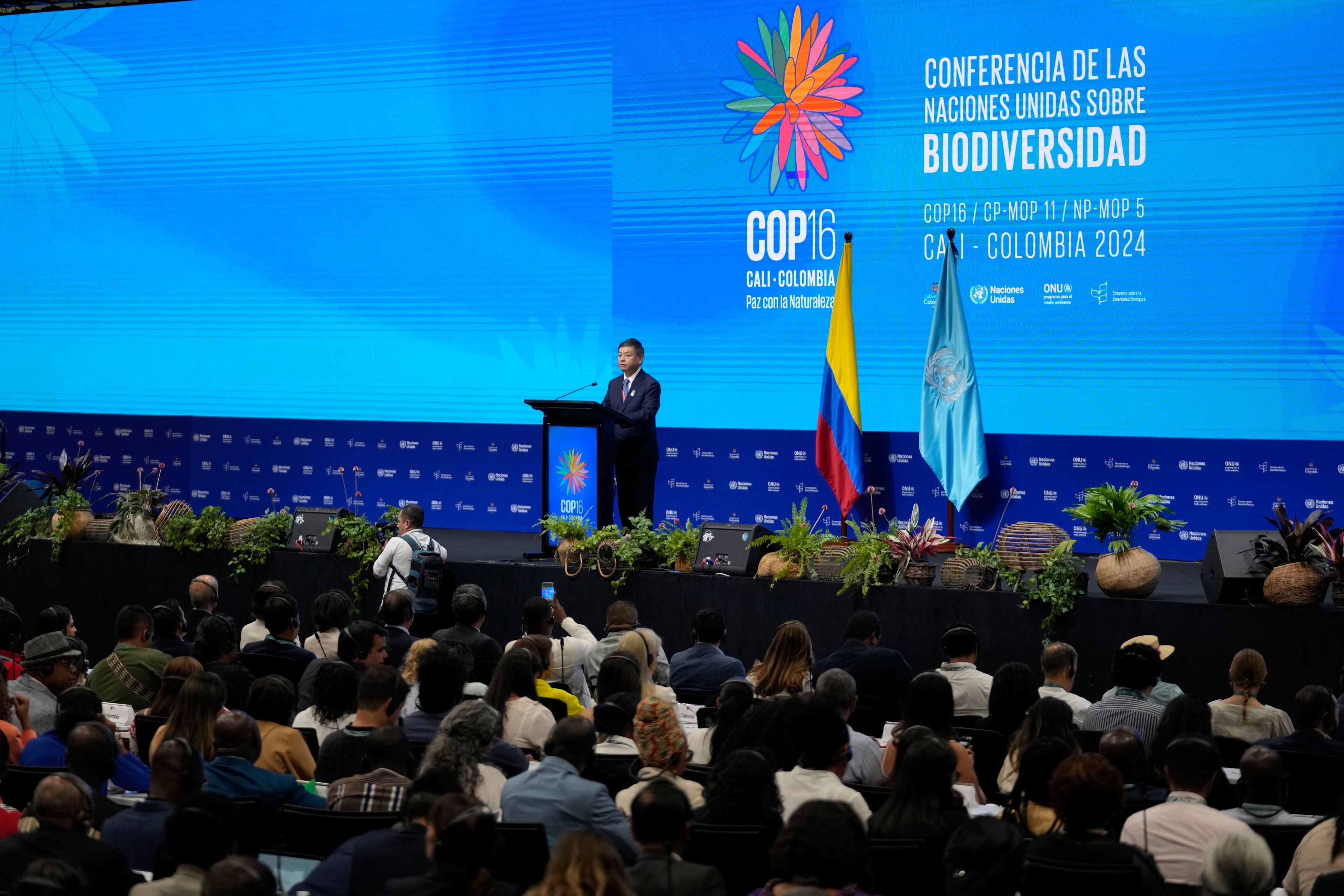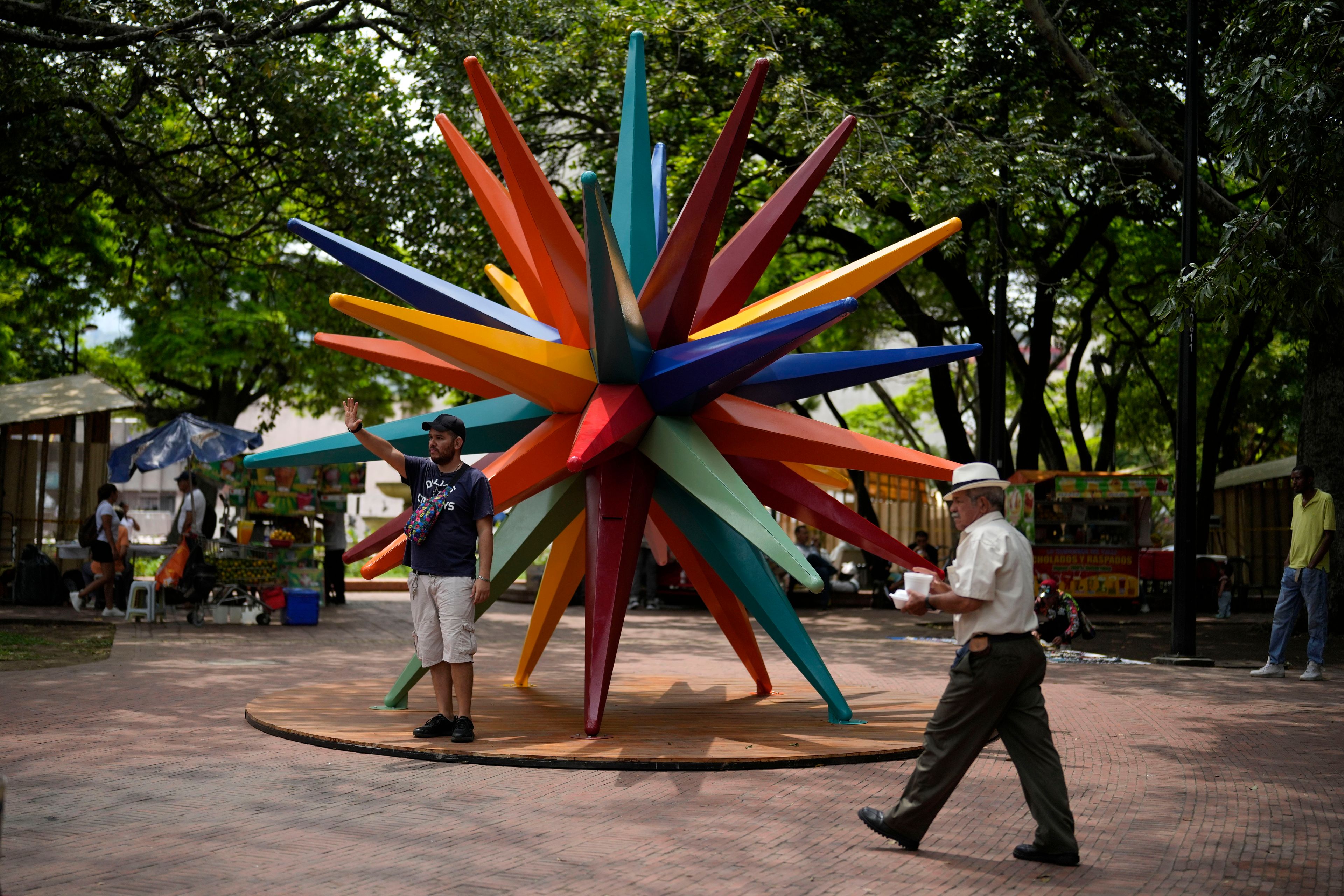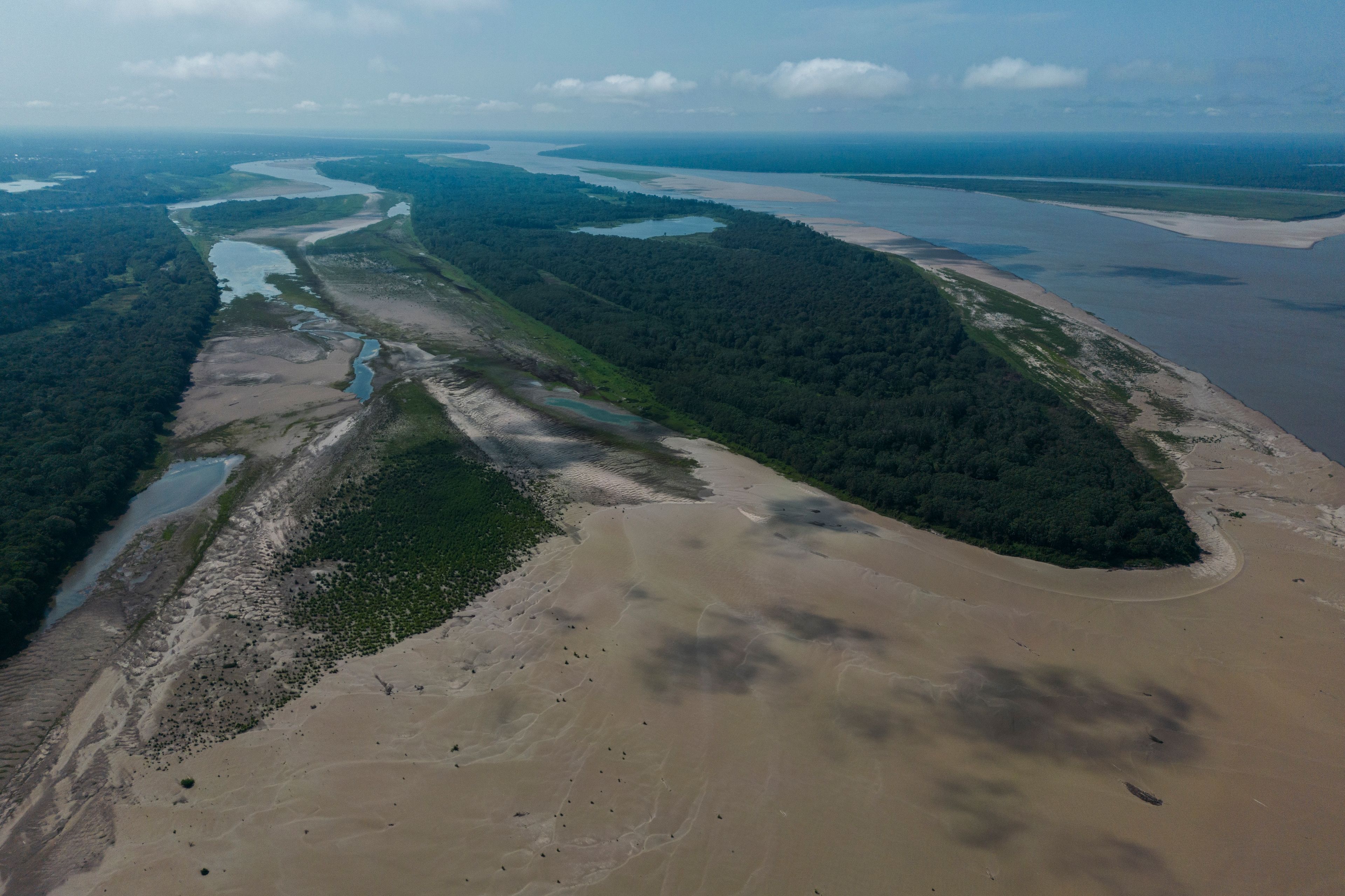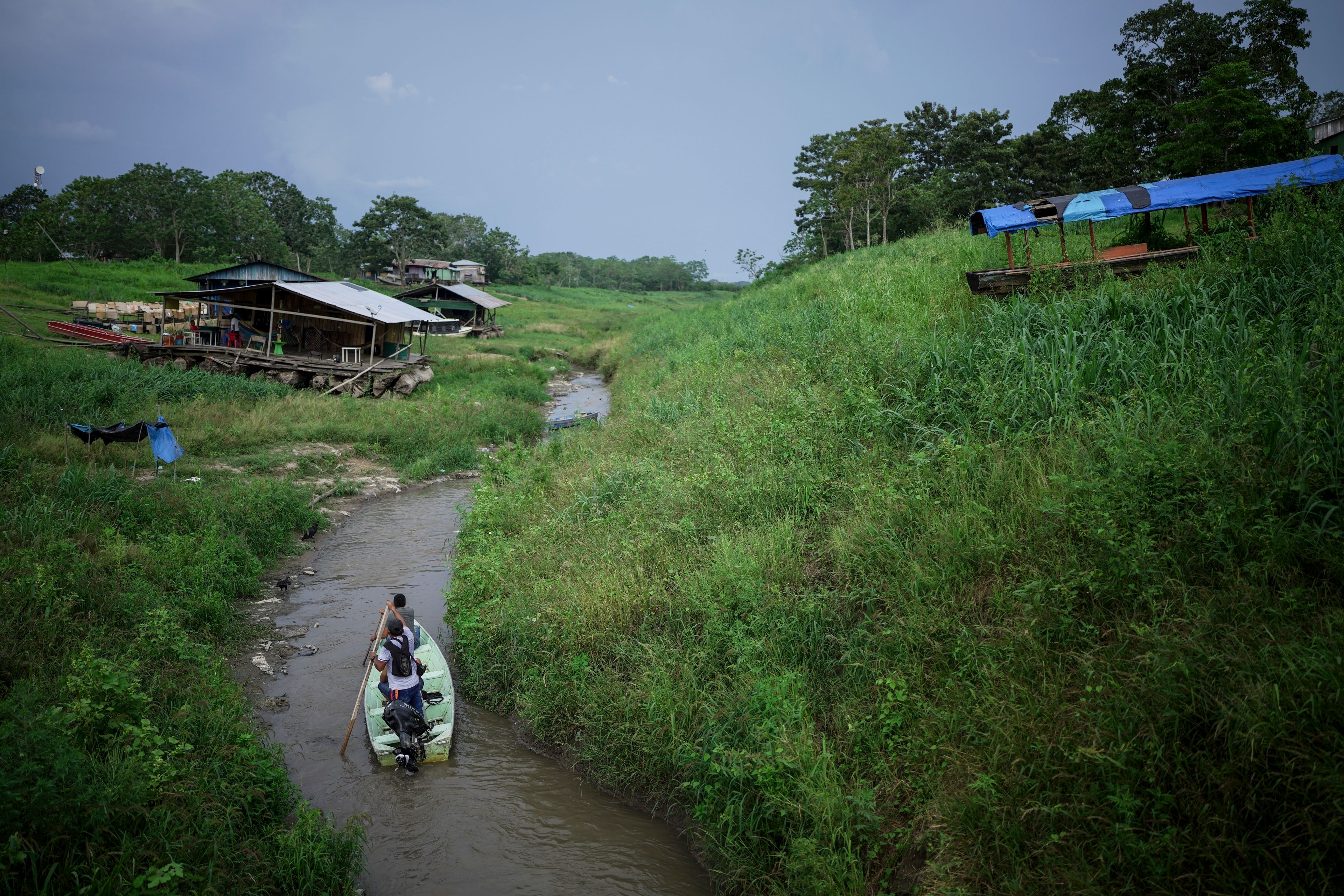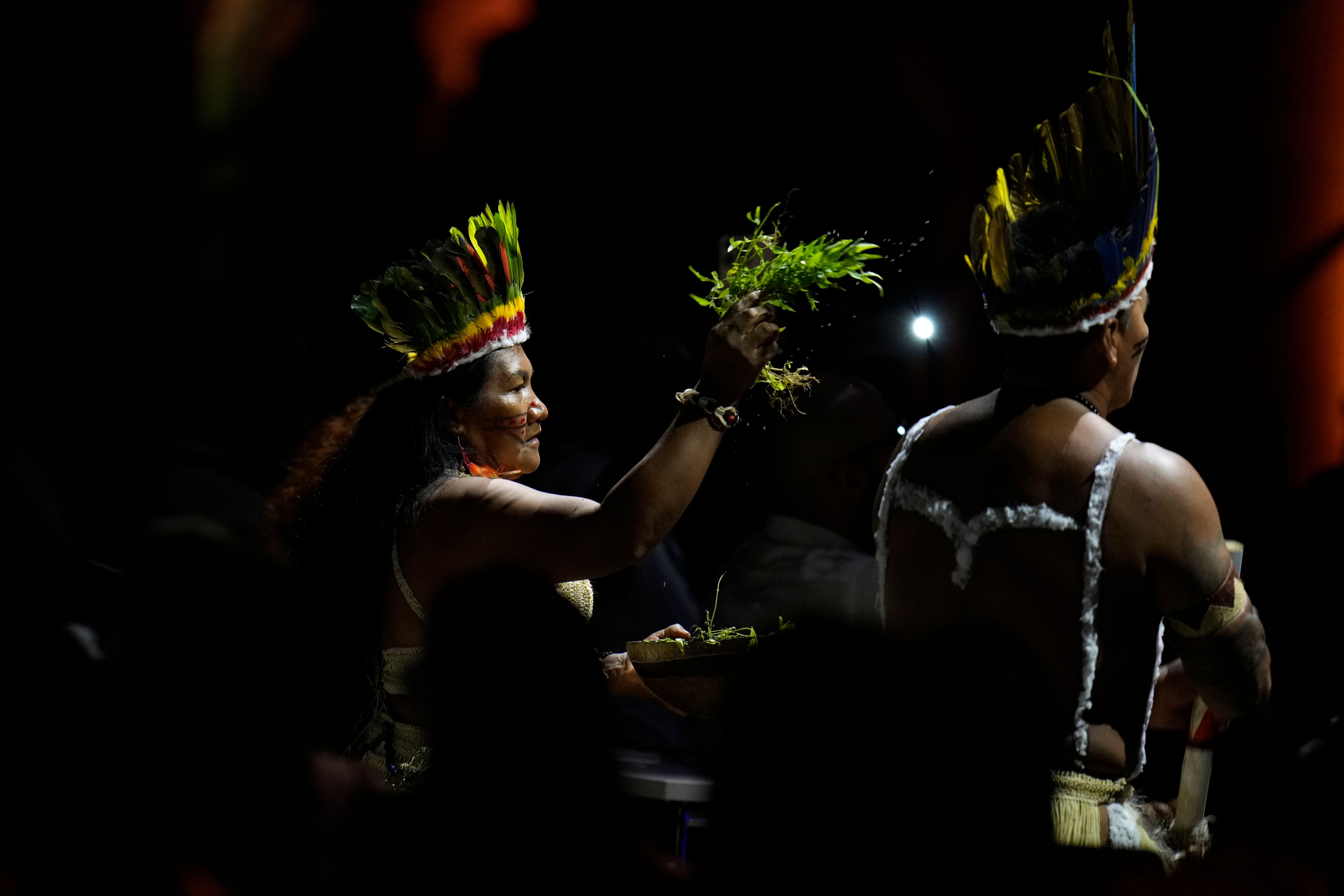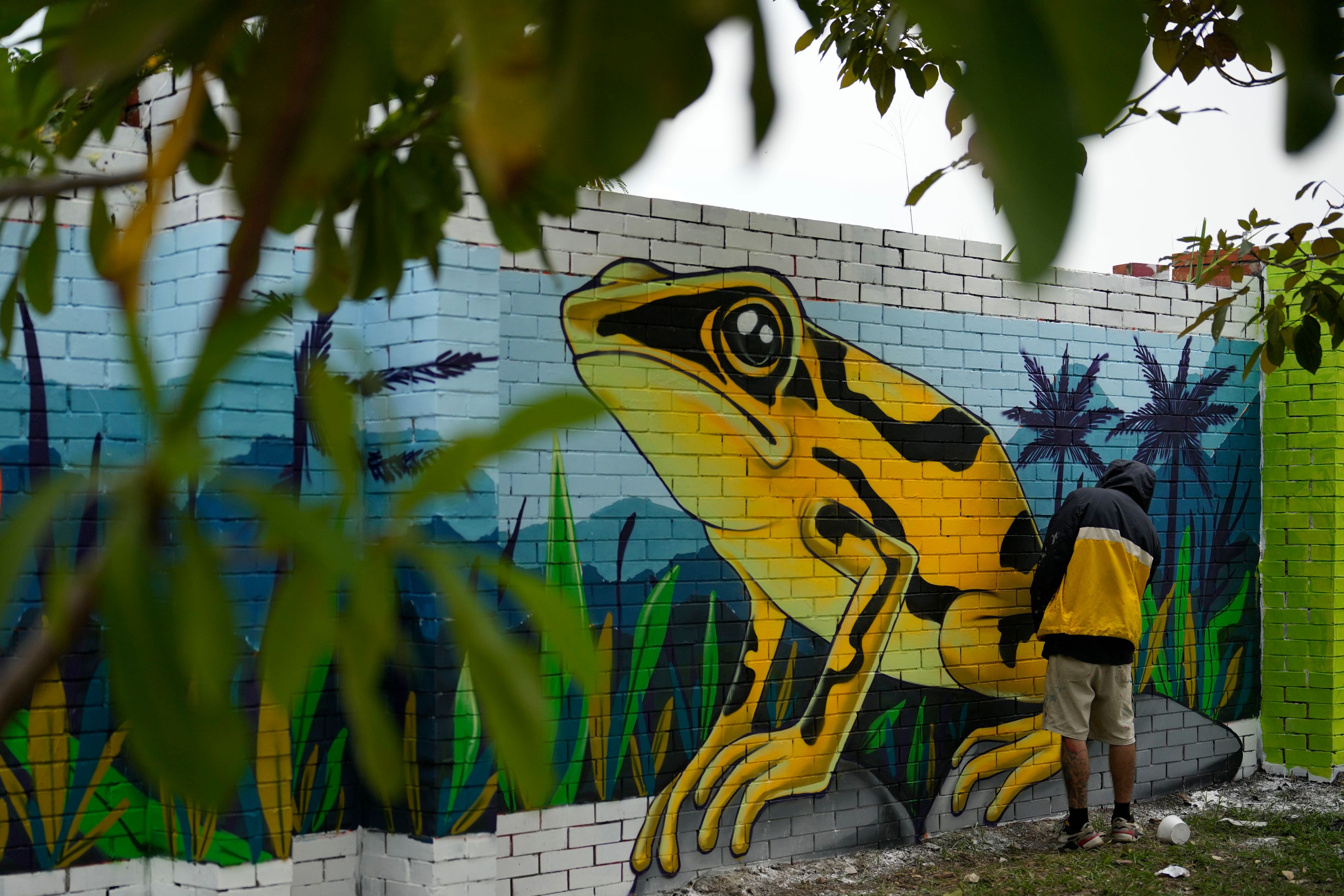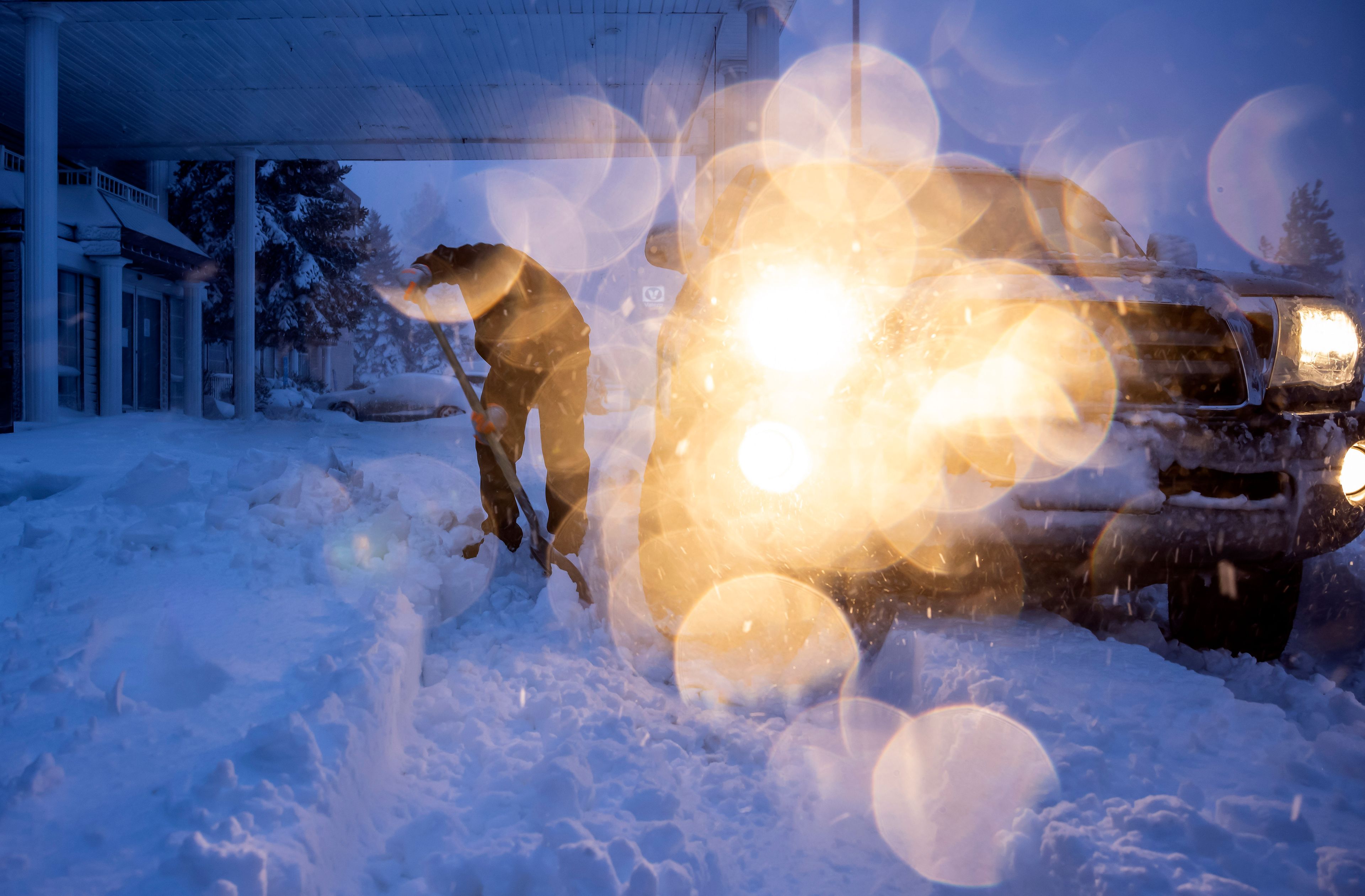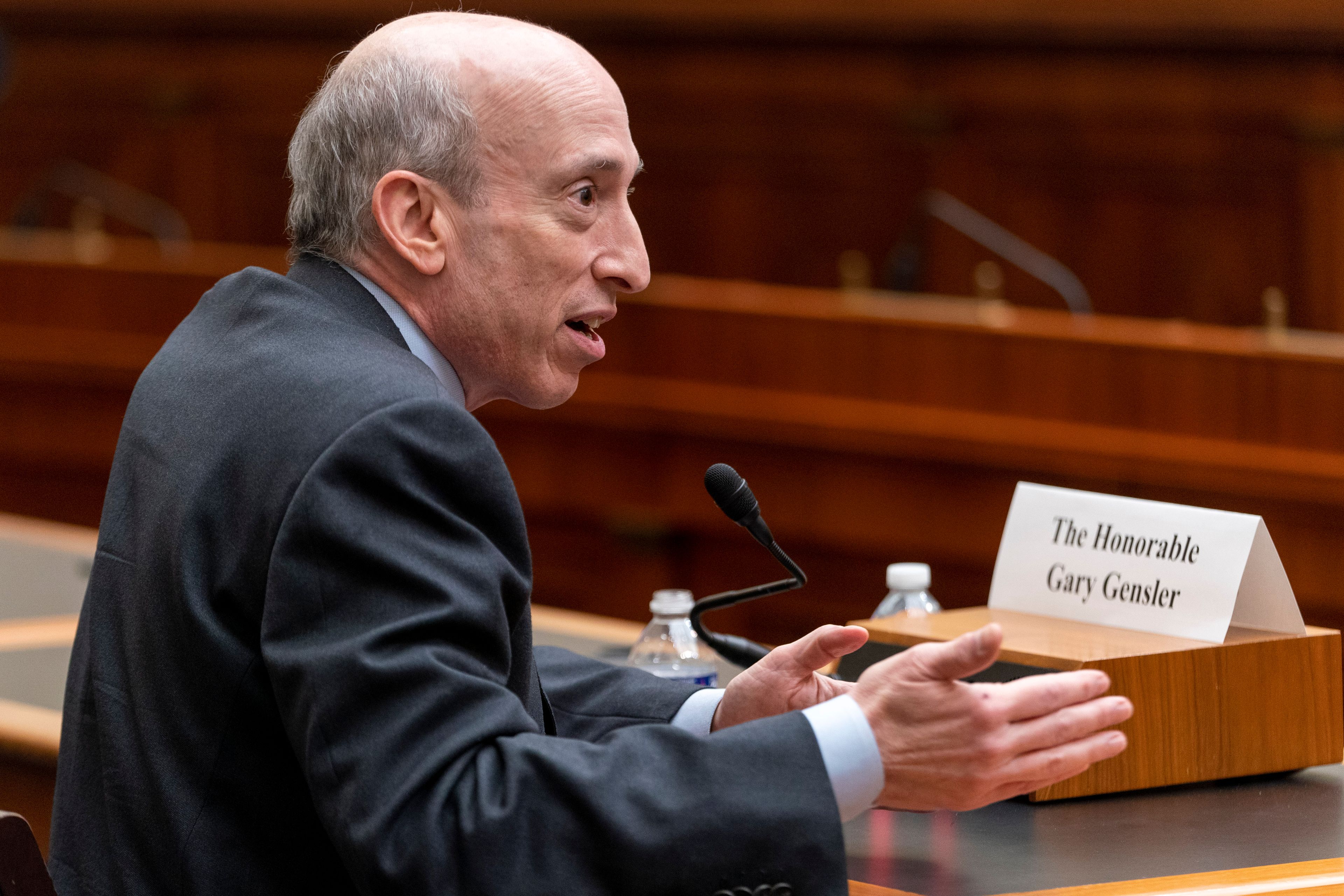Environmental delegates gather in Colombia for a conference on dwindling global biodiversity
BOGOTA, Colombia (AP) — Global environmental leaders gather Monday in Cali, Colombia to assess the world’s plummeting biodiversity levels and commitments by countries to protect plants, animals and critical habitats.
BOGOTA, Colombia (AP) — Global environmental leaders gather Monday in Cali, Colombia to assess the world’s plummeting biodiversity levels and commitments by countries to protect plants, animals and critical habitats.
The two-week United Nations Biodiversity Conference, or COP16, is a follow-up to the 2022 Montreal meetings where 196 countries signed a historic global treaty to protect biodiversity.
The accord includes 23 measures to halt and reverse nature loss, including putting 30% of the planet and 30% of degraded ecosystems under protection by 2030.
“We hope that (COP16) will be an opportunity for countries to get to work and focus on implementation, monitoring and compliance mechanisms that then have to be developed in their countries and in their national plans,” said Laura Rico, campaign director at Avaaz, a global activism nonprofit.
A real threat to biodiversity loss
All evidence shows dramatic decline in species abundance and distribution, said Linda Krueger, director of biodiversity at The Nature Conservancy.
“A lot of wild species have less room to live, and they’re declining in numbers,” Krueger said. “And we also see rising extinction rates. Things that we haven’t even discovered yet are blinking out.”
The world is experiencing its largest loss of life since the dinosaurs, with around 1 million plant and animal species now threatened with extinction, according to the United Nations Environment Programme.
In the Amazon rainforest, threats to biodiversity include the expansion of the agricultural frontier and road networks, deforestation, forest fires and drought, says Andrew Miller, advocacy director at Amazon Watch, an organization that protects the rainforest.
“You put all of that together and it’s a real threat to biodiversity,” Miller said.
Global wildlife populations have plunged on average by 73% in 50 years, according to the WWF and the Zoological Society of London biennial Living Planet report this month.
The report said Latin America and the Caribbean saw 95% average declines in recorded wildlife populations.
Indigenous communities key to biodiversity protection
Indigenous people are on the front lines of protecting biodiversity and fighting against climate change, putting their lives at great risk, said Miller of Amazon Watch.
“A lot of discourse has been given about the voices of local communities … Indigenous peoples really playing a key role,” he said. “So that’s one of the things that we’ll be looking for at COP16.”
Indigenous peoples hold the solutions to combat the climate change and biodiversity crises, Rico said.
“They're who have been taking care of the land, healing the land through their governance systems, their care systems and their ways of life,” she said. “So ... it's fundamental that the COP recognizes, promotes and encourages the legalization of their territories.”
In Colombia’s capital, Bogota, the head of an Amazon Indigenous organization said the region's Indigenous people have been preparing for months for COP16.
“This is a great opportunity to make the impact that we need to demonstrate to all the actors that come from other countries the importance of Indigenous peoples for the world,” said José Mendez, secretary of the National Organization of the Indigenous Peoples of the Amazon.
“It's no secret to anyone that we ... are at risk right now,” he said. “The effects that we are currently experiencing due to climate change, the droughts that the country is experiencing, the Amazon River has never gone through a drought like the current one. … This is causing many species to become extinct.”
Nature can recover
Colombia’s environment minister Susana Muhamad, who is presiding over COP16, told local media this month that one of the conference's main objectives is to deliver the message that “biodiversity is as important, complementary and indispensable as the energy transition and decarbonization.”
Part of Colombia's first ever leftist government, Muhamad cautioned last year's World Economic Forum about the risks of continuing an extractive economy that ignores the social and environmental consequences of natural resource exploitation.
Since the 2022 Montreal conference, “progress has been too slow”, says Eva Zabey, executive director of the coalition Business for Nature.
“There's been some progress," she said. “But the headline message is the implementation of the global biodiversity framework is too slow and we need to scale and speed up.”
“COP16 comes at an absolutely critical moment for us to move from targets setting to real actions on the ground,” Zabey said.
Although biodiversity declines are grim, some environmentalists believe a reversal is possible. “We’ve had some very successful species reintroductions and we’ve saved species when we really focus on what is causing their decline,” said The Nature Conservancy's Krueger.
__
Follow Steven Grattan on X: @sjgrattan
__
The Associated Press’ climate and environmental coverage receives financial support from multiple private foundations. AP is solely responsible for all content. Find AP’s standards for working with philanthropies, a list of supporters and funded coverage areas at AP.org.
Connect with the Southeast Missourian Newsroom:
For corrections to this story or other insights for the editor, click here. To submit a letter to the editor, click here. To learn about the Southeast Missourian’s AI Policy, click here.


